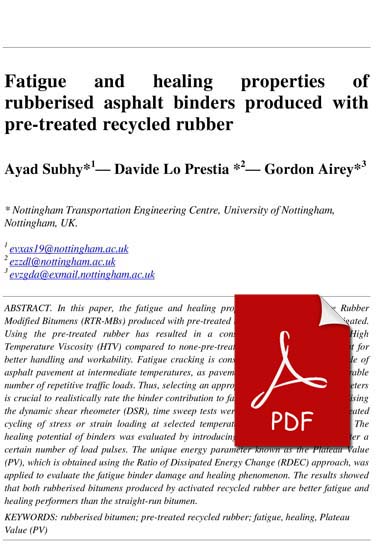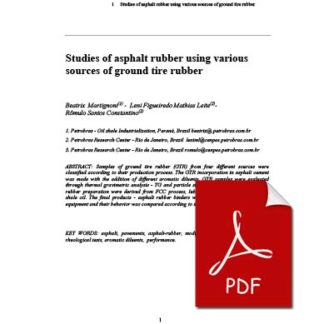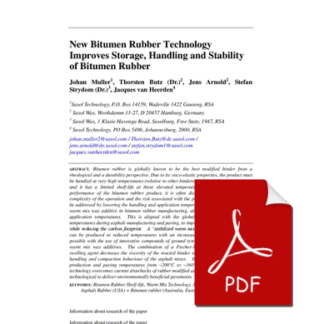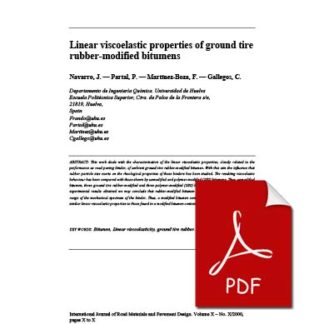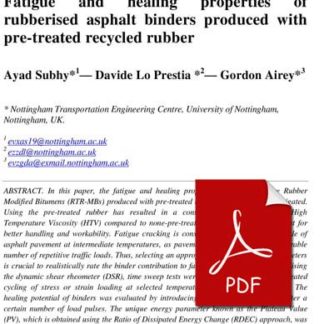Description
In this paper, the fatigue and healing properties of Recycled Tyre Rubber Modified Bitumens (RTR-MBs) produced with pre-treated recycled rubber were investigated. Using the pre-treated rubber has resulted in a considerable decrease in the High Temperature Viscosity (HTV) compared to none-pre-treated rubber which is important for better handling and workability. Fatigue cracking is considered the main distress mode of asphalt pavement at intermediate temperatures, as pavement is subjected to a considerable number of repetitive traffic loads. Thus, selecting an appropriate test method and parameters is crucial to realistically rate the binder contribution to fatigue damage resistance. Utilising the dynamic shear rheometer (DSR), time sweep tests were conducted by applying repeated cycling of stress or strain loading at selected temperatures and loading frequency. The healing potential of binders was evaluated by introducing short rest periods (RPs) after a certain number of load pulses. The unique energy parameter known as the Plateau Value (PV), which is obtained using the Ratio of Dissipated Energy Change (RDEC) approach, was applied to evaluate the fatigue binder damage and healing phenomenon. The results showed
that both rubberised bitumens produced by activated recycled rubber are better fatigue and healing performers than the straight-run bitumen.

